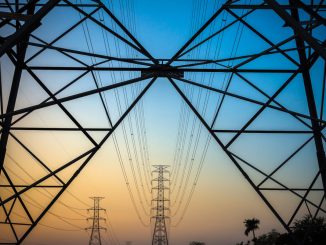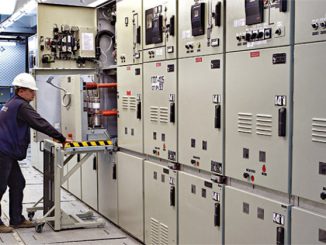
Advanced design and technology trends in cables and conductors are centred on reducing the right-of-way (RoW) requirement as well as increasing the current-carrying capacity of transmission lines. As space is often constrained in urban areas, transmission and distribution (T&D) utilities are increasingly installing compact transmission lines, which have lower RoW requirements and small-sized towers. Further, new conductors are being deployed for carrying higher currents while allowing higher temperature ratings. These include aluminum conductor steel supported (ACSS), aluminium conductor composite core (ACCC) and aluminum conductor composite reinforced (ACCR) cables in place of the conventional aluminium conductor steel-reinforced (ACSR) and all aluminium alloy conductor (AAAC) cables.
Power Line presents an update on advanced conductor technologies…
HTLS conductors
High-temperature low-sag (HTLS) conductors are characterised by high temperature resistance and greater ampacity than conventional conductors. While the conventional ACSR and AAAC conductors are designed to operate continuously at temperatures of 85 °C and 95 °C respectively, HTLS conductors can withstand temperatures of at least 150 °C and up to 250 °C. Further, HTLS conductors have 30 per cent more capacity than that of conventional conductors and the low sag feature results in smaller tower requirement.
The common materials used for making HTLS conductors include INVAR steel (Fe-Ni alloy), aluminium-zirconium (Al-Zr) alloys, annealed aluminium, high strength steel, and metal and polymer matrix composites. HTLS conductors are stranded with a combination of aluminium/alloy wires for conductivity and reinforced by core wires.
HTLS conductors offer several benefits to utilities as they can be deployed in new transmission lines as well as be used for reconductoring of existing lines to increase their power transfer capacity. In the case of interstate transmission system (ISTS) lines, HTLS can be deployed at the 220 kV, 132 kV and 66 kV levels. At 400 kV, HTLS can replace quad bundle ACSR and AAAC conductors when the line length is short. The Central Electricity Authority released draft guidelines for HTLS conductors in May 2016.
The first HTLS project in India was implemented by Power Grid Corporation of India Limited (Powergrid) for the line-in line-out (LILO) of one circuit of the 400 kV double-circuit (D/C) (quad) Dadri-Ballabgarh transmission line at Maharani Bagh, wherein it deployed INVAR type HTLS conductors. Since then, various central and state utilities and private players have deployed over 8,000 km of HTLS conductors, including state transcos of Uttar Pradesh, West Bengal and Odisha, and Tata Power, CESC and Torrent Power.
The main drawback of HTLS conductors is their high cost as they are two to three times more expensive than ACSR and AAAC conductors. Also, limitations are posed by surge impedance loading and greater losses in long transmission lines deploying HTLS conductors. Further, these conductors require non-conventional methods of stringing and their operations and maintenance requires a skilled workforce. Besides, utilities have raised concerns regarding the material behaviour, long-term performance and life expectancy of HTLS conductors.
Gas-insulated lines
Gas-insulated lines (GILs) have nitrogen and sulphur hexafluoride as the insulating medium as against physical layers of separation in conventional transmission lines. A GIL comprises aluminium conductors supported by sealed tubes pressurised with gas (nitrogen and sulphur hexafluoride in an 80:20 proportion) as the main insulation.
GILs are a good alternative to overhead lines where RoW is not available for the transmission of electricity, as they can be installed under the ground as well as in tunnels or trenches. These lines are ideally suited for metropolitan areas and cities where there is limited RoW for overhead lines. Underground GILs can also be installed in agricultural areas and the ground above is still viable for growing crops. The installation of vertical GILs is popular in hydropower plants as there is no fire hazard associated with them.
GILs come with several benefits. First, the resistive losses of GILs are lower than of overhead lines and other types of underground cables due to the larger size of conductors and lower resistance. Second, these lines offer greater reliability with no risk of fire and have electromagnetic fields that are 15 to 20 times smaller than those of conventional power transmission systems. Lastly, GILs are unaffected by high temperatures, high solar radiation and pollution.
Although GILs have been deployed by several global T&D utilities, there are not many examples of GILs in India. The North Chennai thermal power plant reportedly has a 1.5 km GIL supplied by the erstwhile Areva T&D in 2010. Issues related to GILs include deterioration in the insulation properties owing to particle contamination and limited protection from seismic activities/earthquakes (in the case of underground lines) and limited maturity of the technology.
High temperature superconductors
High temperature superconductors (HTSs) consist of several strands of superconducting wire wrapped around a copper core, and a cryogenic cooling system to maintain proper operating conditions. These conductors have the capability to carry five to ten times the current carried by conventional conductors – they can transfer more power using the same towers and line corridor. Further, HTS-based devices including cables, fault current limiters, transformers and energy storage solutions can limit over-currents and protect the grid from damage.
They are compact in size and have a lower RoW requirement. Therefore, HTS can be installed in dense urban areas with a high load requirement with the existing RoW. They can also be used to connect two existing substations to create redundancy when transformer addition is not feasible. In addition, the transmission losses associated with HTS are one-fourth as compared to conventional copper/aluminium conductors. Also, electromagnetic radiation is suppressed by the HTS shield. These conductors can operate at a wide voltage range, from 5 kV to 765 kV, and have lower impedance than the conventional ones.
At present, HTSs have mostly been deployed by global utilities, that too, not on a large scale. In 2014, RWE Deutschland, Nexans and KIT installed HTSs as part of the AmpaCity project, which aimed to deploy the world’s longest superconductor system to replace the inner-city high voltage cables. In India, Powergrid is considering a demonstration project on the 220 kV HTS cable system in the grid for assessing feasibility and operational issues. A successful HTS cable systems will facilitate higher power transmission without erecting towers.
XLPE cables
XLPE cables use cross-linked polyethylene as the main insulating material. Cross-linking inhibits the movement of molecules under the stimulation of heat and this gives these cables greater stability at high temperatures, as compared to thermoplastic materials. XLPE cables can operate at higher temperatures, both for normal loading and under short-circuit conditions. These cables have a higher current rating than an equivalent polyvinyl chloride counterpart.
XLPE-insulated cables are useful in direct current (DC) power transmission. Traditional DC power cables include oil-filled or mass impregnated non-drain cables that have limitations for long distance power transmission. While the former requires frequent oil refilling, the latter type suffers from the low operating temperature.
Extruded XLPE cables are increasingly being deployed in new underground transmission throughout the world. Extruded XLPE cables have a high transmission capacity, which is not limited by route length. Powergid is also deploying 320 kV DC XLPE cables for its Pugalur-Trichur HVDC project. The cable will be partially underground and partially overhead. HVDC extruded XLPE cables can be easily laid in deep ocean as well as on rough terrain over a long distance.
The way forward
With the growth of smart grid technologies and the increase in renewable energy capacity, specialised conductors are being designed. For instance, medium voltage smart cables, which integrate optical fibre cable with power cables, are preferred for smart grid applications. Similarly, specialised DC cables in which insulation is cross-linked through electron beam irradiation are being deployed for solar power projects. These cables are required to work in a harsh environment and withstand direct sunlight, humidity, rodent attacks, etc. Besides, utilities are increasingly opting for covered conductors, which use an insulating material as protection against accidental contact with other conductors or with trees and branches, and offer the benefits of lower failure rate, improved safety, and easy installation and operation.



